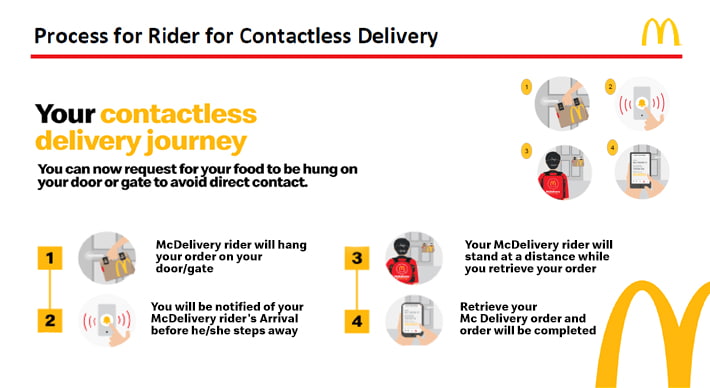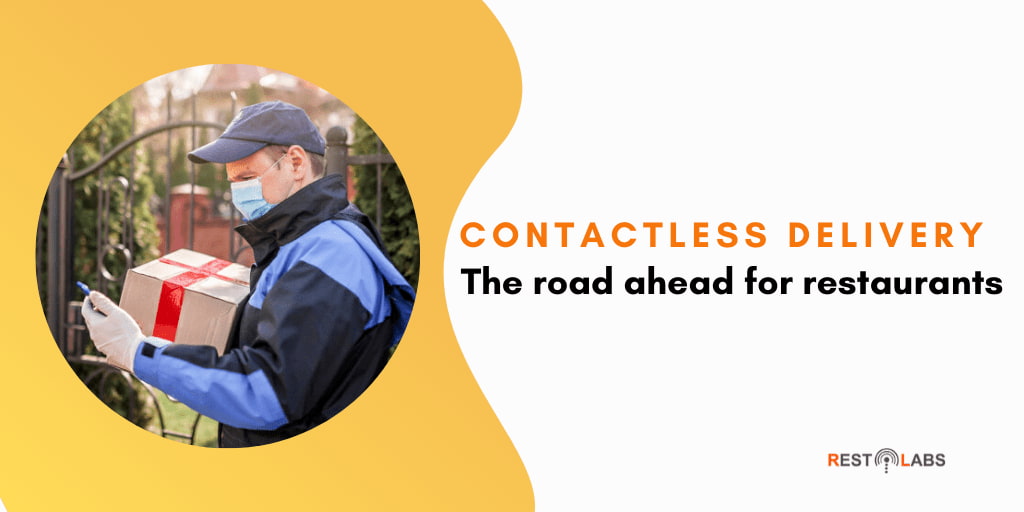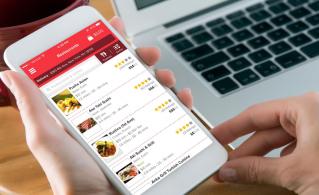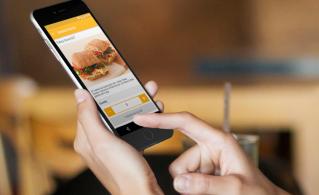Key Takeaways
We are now into the fifth month since the first case of COVID-19 was reported and almost three months into a global lockdown. The unprecedented world order has disarrayed businesses, with the restaurant sector taking one of the worst batterings so far.
While the end to the pandemic is still not in sight, restaurants must start rethinking strategies for the post-COVID-19 world because the business landscape is going to witness some major changes as a direct impact of the present situation. Restaurants must be prepared, both physically and psychologically, to function differently than they normally did.
Among some possible outcomes, including the ubiquity of online delivery, increased safety standards, localized supply chains, etc., industry insiders are also evaluating the potential of contactless delivery to extend into the future.
People are scared of stepping out of their homes and they don’t mind paying a premium price for delivery options that curb human-to-human interaction.
Let’s try and closely grasp the concept of contactless delivery, also known as no-contact or zero-contact delivery while measuring the opportunities and challenges this new service entails for the restaurant industry.
What is contactless delivery?
With the current mandate for social distancing in place and rising health concerns, restaurants and food delivery companies have been implementing a safe practice termed as contactless delivery. The idea is to restrict contact between restaurant workers, from kitchen staff to packaging and delivery agents, and the customer.
The definition, on the other hand, is also increasingly being employed for automated delivery services such as droids, drones, and driverless vehicles.
According to the World Economic Forum, automated delivery vehicles not only mitigate the risk of exposure but also holds immense promise of easing the strain on current delivery services, as demand has swelled since quarantining.
How does it work?
An individual places an order for food online from a website or mobile app. At the time of checkout, the patron is required to select a “contactless delivery” option. However, the service is only available for prepaid orders. Users who choose to pay on delivery can’t avail of the service.
With that said, pre-payment and pre-tipping make the contactless delivery more efficient.
Every precaution is taken to follow strict hygiene standards in the kitchen as well when preparing and packaging the food. The delivery personnel drops the order outside the customer’s doorstep or any other requested spot, informing the latter either by ringing the doorbell, calling them on the phone, or sending a picture.
How restaurants can create a contactless delivery system?
The concept of contactless delivery may appear seemingly simple and easy to implement at first. But this is clearly not the case. There’s more to the application than is obvious and requires stringent standards to be followed across restaurant operations. Restaurants that adapt quickly to help consumers navigate the pandemic safely and effectively will establish a strong advantage.

Example: McDonald’s communicates introduction of Contactless Delivery to its customers
Here are some basics structures and best practices that restaurants are following to create an effective no-contact delivery system:
- Allowing customers to choose the service when ordering by adding a ‘Contactless Delivery’ option on the restaurant’s online ordering website and mobile app or providing a space to type in delivery instructions.
- Enabling contactless transactions through various payment gateways such as ApplePay, SamsungPay, etc. Customers are also encouraged to tip through cashless and careless methods.
- Communicating with customers about all the new updates and features through consistent and clear messaging, especially via social media platforms.
- Escalating safety practices right from sourcing inventory, to prep and cooking, packaging, and delivery. Sanitization efforts at restaurant premises have been doubled too.
- Reinforcing hygiene and health practices for employees by strictly adhering to the Centers for Disease Control and Prevention and World Health Organization guidelines. These include increasing washing regimes, installing hand-sanitizing facilities, mandatory temperature checks, the use of appropriate masks and gloves, and adequate self-quarantine measures for affected workers.
The COVID-19 outbreak has triggered these obligatory procedures for restaurants if they are to offer a contactless delivery service. These measures not only safeguard employees’ and customers’ health but also ensure trust in the brand stays intact.
That being said, this may even be the only way for restaurants to survive the current pandemic.
Future challenges for contactless restaurant delivery
For some time, fomite fear will be all-pervasive, creating a mistrust amongst customers. But yet, even if and when life starts getting back to ‘normal’, we cannot expect customers to immediately let go off the expectations and behaviors influenced by the outbreak. So it appears that offering contactless delivery services must be a case of when and not if for restaurants.
According to a McKinsey report, digital and low-touch activities are growing during the pandemic and many consumers even expect some of these activities to enter their ‘Next Normal’.
Automated technologies offer interesting opportunities for contactless delivery. Faster delivery times and low environmental impact are additional advantages. It won’t be a surprise if restaurants start hiring robots and drones for food deliveries.
Naturally, this raises the question of readiness. Industry experts see two key challenges in this sector. First, most restaurants have suffered major downturns in revenue because of the pandemic so investing in these technologies, which requires huge capital, may not be viable. Secondly, implementing them within the current operations may require a complete restructuring of a restaurant’s business model.
The demand for contactless delivery is clear, and luckily, the technology to enable it is readily accessible. But how many restaurants would be able to meet the stringent safety standards is the real question. The “contactless” work best with full integration between internal and external system, technologies, and teams.
Restaurants that want to pivot to no-contact processes in reaction to COVID-19 must begin implementing these systems as soon as possible!
Interested in technological solutions for safe delivery? Let us know in the comment section below.
Frequently Asked Questions
Contactless delivery ensures safety, reduces human interaction, and meets the growing demand for convenience, especially in post-pandemic times.
You can implement contactless delivery by offering online payments, utilizing delivery apps, and providing clear instructions for no-contact drop-offs.


.gif)








